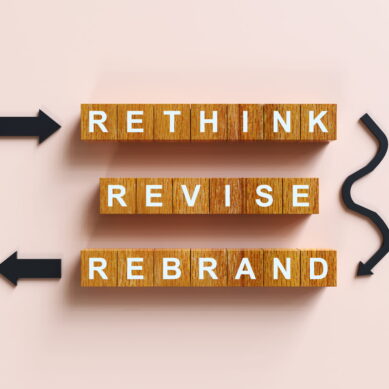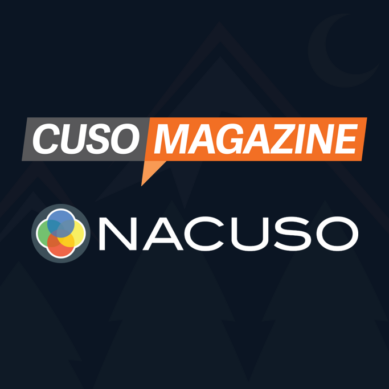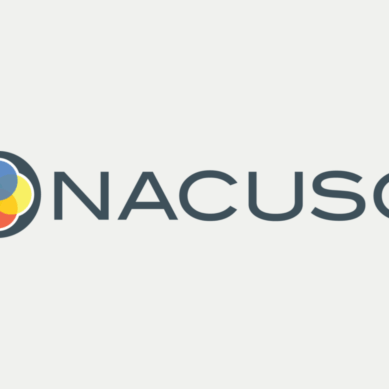In a world where digital experiences define member satisfaction, personalization has become a powerful tool for standing out. Credit unions, known for their community-first mindset, are uniquely positioned to deliver these tailored experiences in ways that larger institutions can’t.
While big names like Amazon and Netflix have made consumers familiar with personalization, credit unions can bring it to a more meaningful, member-centric level. In this post, we’ll explore how harnessing personalization on your website can deepen member engagement, increase satisfaction, and fuel long-term growth.
What is personalization?
Personalization involves customizing content, services, and communications to meet the specific needs of individual users based on their preferences, behaviors, and demographics. For credit unions, it’s more than a trendy feature—it’s a natural extension of the member-first philosophy.
Personalization helps credit unions stand out from larger competitors by offering experiences that feel more thoughtful and relevant. By focusing on what matters to each member, credit unions can strengthen relationships, increase member satisfaction, and boost long-term retention.
Examples of personalization
Imagine a member visits your website and clicks to view your auto loan rates. Chances are, they’re not ready to make a decision right away—they might just be in the research phase, exploring rates, payments, prices, and deals to decide their best choice.
Instead of making them search for this information again on their next visit, your website can remember what they were looking for. The next time they return, your homepage can automatically display relevant content like current auto loan promotions, loan calculators, vehicle loan rates, and even blog posts with tips on saving for a car loan or what to look out for.
This is a simple example of how content personalization can make the experience easier and more helpful for your members. It shows that your credit union understands what they need, which builds trust and keeps them coming back.
How to add personalization to your website
Adding personalization to your credit union’s website may sound complex, but with WordPress, it’s easier than it sounds. Several plugins are available that make it simple to personalize your site’s content and can be set up in just a few steps.
Research and install a personalization plugin or product
WordPress offers a variety of plugins designed to add personalized content to your site. These plugins typically allow you to show different content to visitors based on their actions, preferences, or even location. Setup usually involves installing the plugin, defining your audience segments, and setting rules for when and where personalized content should appear.
For example, you can create rules that show specific promotions to users who have previously visited certain pages or clicked on particular links.
How personalization works
At its core, personalization plugins use cookies or browser data to track user behavior on your site. This data helps the plugin identify returning visitors, allowing you to display tailored content.
For instance, if a member frequently visits your auto loan page, the plugin can recognize this and adjust the homepage or other pages to feature related information, such as special loan rates or car-buying resources. These cookies simply store basic data about the user’s activity—nothing overly invasive or complex.
However, it’s crucial to respect your members’ privacy while using these tools. Be transparent about how data is collected and used, and always give members the option to opt out of personalized experiences if they prefer. Additionally, you should research and comply with any relevant state or local ordinances, such as data privacy laws, to ensure you’re handling personal information responsibly and in line with regulations like the GDPR or CCPA.
By balancing personalization with privacy, you can build trust with your members while still delivering a customized experience that meets their needs.
Segmenting your audience
To get started, you’ll need to identify different types of visitors and what content would be most relevant to them. This could be based on browsing history, location, or membership level. Personalization plugins allow you to define these segments within your WordPress dashboard. Once set up, the plugin takes care of adjusting the content based on the rules you’ve created.
Setting up dynamic content
One of the most powerful features of these tools is the ability to display dynamic content. Dynamic content automatically changes based on the user’s interaction with your website. It’s as simple as selecting areas of your website (like banners, CTAs, or text sections) and configuring the plugin to show different versions of that content depending on the visitor’s activity or preferences.
This might be as subtle as changing a welcome message for returning visitors or as impactful as highlighting relevant loan offers based on previous page visits.
Benefits of personalization for credit unions
While personalization improves the member experience, it also has significant benefits for the credit union itself. Here are some key advantages:
- Increased Engagement: Personalized content encourages members to spend more time on your site, exploring services that align with their needs.
- Higher Conversion Rates: By presenting relevant offers, like targeted loan promotions or tailored financial products, members are more likely to take action, whether it’s applying for a loan or signing up for a new service.
- Improved Member Retention: Personalization creates a sense of connection and loyalty. When members feel that your credit union understands and meets their specific needs, they’re more likely to stick with you long-term.
- Operational Efficiency: With the right plugins and automation tools, personalization can help reduce the manual work of updating content for different segments, freeing up time for your team.
Personalization pitfalls to avoid
While personalization can be a powerful tool, it’s important to avoid some common missteps:
- Over-Personalization: While it’s great to tailor experiences, too much personalization can feel invasive or overwhelming to members. Focus on providing useful, relevant information without overloading visitors with overly targeted content.
- Not Offering an Opt-Out: It’s important to give members the option to turn off personalized experiences. Respect their privacy by allowing them to control how much personalization they receive.
- Ignoring Data Privacy: Ensure that any personalization efforts comply with privacy regulations and that your use of cookies or tracking is transparent to your members. Always prioritize data security.
Measuring the success of personalization
Once you’ve implemented personalization on your website, it’s important to track its success. Here’s how you can measure the impact:
- Engagement Metrics: Monitor how personalized content influences key metrics like time spent on the site, page views, and interactions with personalized offers.
- Conversion Rates: Measure how personalization affects the rate at which members apply for loans, sign up for new accounts, or engage with other financial products.
- Member Feedback: Consider gathering feedback through surveys or comment sections to learn how members feel about the personalized experience and if it’s meeting their needs.
- A/B Testing: Use A/B testing to try different personalized content strategies and identify what resonates most with your audience.
Creating a better member experience
Personalization is more than just a bonus feature; it’s a strategic tool that can help credit unions build stronger, more meaningful connections with their members. By offering tailored content and experiences, you can show that your credit union truly understands and values its members’ unique needs and preferences.
Whether it’s boosting engagement, increasing conversions, or enhancing member loyalty, personalization has the power to transform how your credit union interacts with its community.
By leveraging WordPress tools, carefully planning your audience segments, and maintaining a focus on privacy, your credit union can implement personalization in a way that is both effective and member-friendly.
Ultimately, personalization is about putting your members first—something credit unions are already great at doing. By bringing that same level of care and consideration to your website, you’ll set your credit union apart in today’s competitive financial landscape.






















































